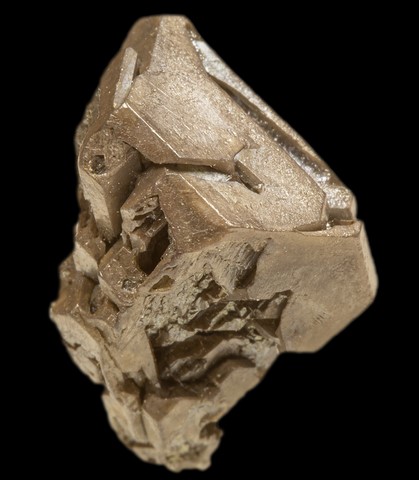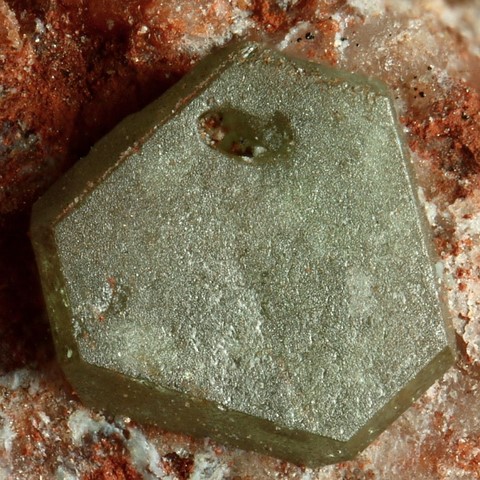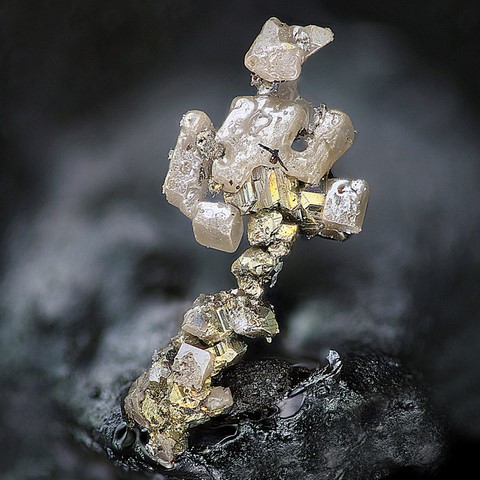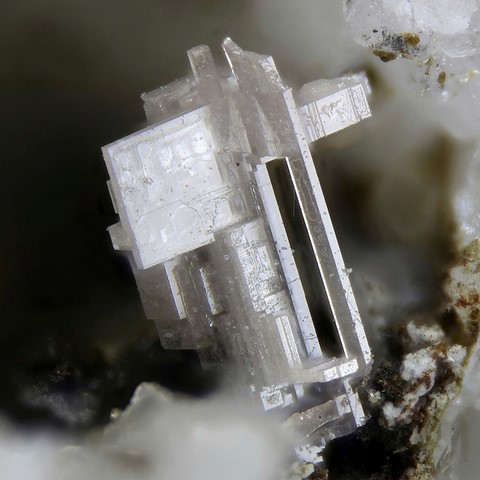CHLORARGYRITE
Class : Halides
Subclass : Chlorides
Crystal system : Cubic
Chemistry : AgCl
Rarity : Uncommon
Chlorargyrite (or cerargyrite) is a fairly common silver halide that sometimes forms abundantly in the oxidation zone of silver deposits in arid regions. It forms a complete solid solution with bromargyrite and usually occurs in "horny", waxy, sometimes columnar, rarely fibrous masses. It owes its name to its chemical composition : chlorine and silver (arguros in Greek). Chlorargyrite is translucent, resinous to adamantine in luster, pearl gray to grayish green in color, most often ; photosensitive, it becomes purple-brown then black in the light. The crystals are cubic or octahedral, often in sub-parallel groupings. Of low hardness (1.5 to 2.5), chlorargyrite is plastic and cuts into chips like wax. It is unalterable in air and remains stable in outcrops, often in the company of native silver, argentite and various metallic oxides. Chlorargyrite, unlike other silver halides, once existed in considerable quantities in outcrops and may thus have constituted an important silver ore. Large quantities of chlorargyrite have in fact been exploited in several deposits : Potosi (Bolivia), where Pone de Léon (1547) speaks of 6000 furnaces treating cerargyrite by fusion ; Johanngeorgenstadt and Schneeberg, in the Erzgebirge of Saxony ; Chañarcillo and Caracoles (Chile) ; finally, more anecdotally, at Treasure Hill (Nevada), where a 6-ton mass of chlorargyrite was extracted.
Main photo : Chlorargyrite from Broken Hill, Australia © Chris Stefano
Chlorargyrite in the World
Twinning
Twins are common on {111} but rarely visible.
Fakes and treatments
No fake identified for this mineral species.
Hardness : 1.5 to 2.5
Density : 5.55
Fracture : Irregular
Streak : White
TP : Translucent to transparent
RI : 2.07
Birefringence : 0
Optical character : None
Pleochroism : None
Fluorescence : None
Solubility : Ammonia and potassium cyanide
Magnetism : None
Radioactivity : None





